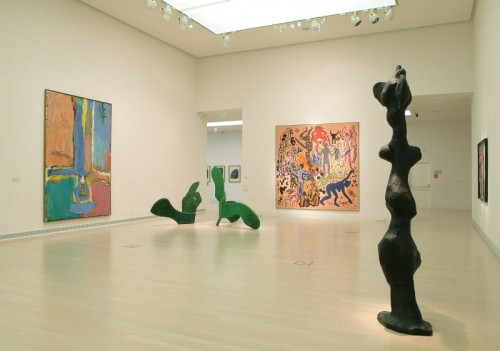Recovering from surgery in 1965, Picasso, in the middle of his 80s, sets to drawing and painting with a renewed effort in his new studio. One of the favorite subjects and figures of his paintings and drawings is the “musketeer,” which has its antecedents not only in literature and art history, but in contemporary pop culture, as well. The fictitious signature, “Domenico Theotocopoulos van Rijn da Silva” on the back of the picture refers to its art historical antecedents. El Greco (Domenikos Theotokopulos), Rembrandt (van Rijn), and Diego Rodriguez (da Silva) y Velázquez are the three 17th-century masters whose portraits and self-portraits feature men with distinctive hair, mustache and beard and in lace-collared black dresses, which are also to be seen here. The figure depicted on the rough wood panel with quick, loose brush strokes is a kind of paraphrase and essence of these paintings and, at the same time, Picasso's painterly self-portrait. It is not only an homage to the masters, but also one of the many roles in which Picasso's artistic and male pride can manifest itself. K.SZ.


